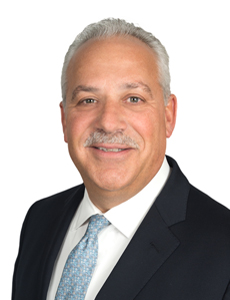The Future of Insurance: Growing A Shifting Business Model

With increasingly severe weather, growing political volatility, cyber concerns and other threats, companies continue to invest in their risk preparedness.
And with this investment, insureds and insurers are changing the way insurance business is done. Where once the idea of repairing and reimbursing insureds after a loss was key, more and more insurers are investing in ways to predict and prevent losses in an effort to better meet the demands of their clients.
“Carriers have boosted their risk engineering/loss prevention capabilities to gain better control over the risks that we, as insurers, assume, as well as help clients address their exposures head-on, because that is something that clients are actively looking for,” said Joe Tocco, chief executive, insurance, North America, at AXA XL.
“We’re intent on being there for our clients every step of the way, not just after they file a claim,” said Tocco, who also contributes to Risk & Insurance® as a Risk Insider.
A Shifting Business Model
Insurers aren’t saying they want to move from being a “payer” to a “partner” just to be nice, either. They’ve recognized that the insurer/insured relationship is moving from commoditized risk transfer to collaborative risk mitigation.
“In the past, businesses relied on insurance as a piece of paper — a contract — that provided a financial safety net when something happened,” Tocco said. “As insurers, we’re shifting that notion that our clients only realize the value of insurance on the back end, when something happens. We want to show that there is value in buying insurance every step of the way.”

Joe Tocco, chief executive, insurance, North America, AXA XL
And, on the other end of the equation, insureds’ expectations are shifting, growing just as quickly as the risks that warrant such change.
“Insureds are more focused on risk management and the sophistication necessary to appropriately protect their business than ever before,” said Shawn Ram, head of insurance, Coalition Inc.
He added that as insureds recognize the value insurance can provide beyond the payment of claims, the relationship between insurer and insured has changed.
Mike Pesch, CEO of Gallagher’s U.S. property/casualty operations, agreed: “The relationship has evolved and matured.”
And looking at it from a broker’s perspective, “if you look at the typical buyer of an organization, those roles have changed. And as they have changed, the next generation has come in with a different way of looking at risk and different expectations of their insurance broker.”
Generational shifts are one big influencer on how the industry has been guided. Pesch also said that the value-adds to a company are continuously changing. “We’re constantly adding and deploying resources to add value to our clients.”
Finally, access to data and all its uses are impacting the way insureds interact with both carrier and broker alike.
“Access to and use of information and data to support the client and guide their decisions offers an inherent advantage. It helps us show clients how much risk to take, what claims trends are moving and where to focus their mitigation strategies,” Pesch said.
“Today, carriers can provide tremendous value to insureds such as data, risk management best practices including assistance with policies, procedures including security protocols, and disaster recovery plans,” added Ram.
Factors Driving This Shift
“Risks have changed,” said Nir Kossovsky, CEO, Steel City Re, and a fellow Risk Insider. “New risks [we see] are behavioral and social challenges. Their frequency and severity are not stochastic like most physical perils.
“Social process risks are not being driven by mathematical probability. Moreover, typical companies don’t possess expertise on these new risks— either for managing them or for calculating the value at risk.”
“We’re intent on being there for our clients every step of the way, not just after they file a claim.” — Joe Tocco, chief executive, insurance, North America, AXA XL
This is why managing risk has become more of a collaborative effort amongst insurers and insureds. If the expertise lies outside the company walls, as Kossovsky says, then carriers have an opportunity to work with their clients to understand and mitigate growing risks.
Cyber risk and reputation risk are two areas where the ability to reimburse an insured for a loss has become less important than the tools made available to mitigate risk and restore the business post-loss.
“Cyber has had a significant impact on the insurer/insured relationship,” said Ram. “As insureds come to a greater understanding of their cyber risk, their desire to better understand how underwriters assess risk has increased.
“This has led to insurers attempting to provide additional value to insureds. This has also created an experience, in cyber more than any other product area, where insureds see far greater involvement from carriers.”
Pesch added, “Cyber is always in the news; it’s a growing exposure. If we can identify a client’s exposures, we can help save the company.”
As an example, Tocco detailed the story of an on-demand cyber insurance product for small to medium size businesses AXA XL has been working on: “Before launching, our cyber team and [partner Slice Labs] sought feedback from potential clients of the product and the experience buying the product online.

Nir Kossovsky, co-founder and chief executive officer, Steel City Re
“The intent is to continue to do this, allowing the cyber coverage to evolve based on the needs and feedback of our clients. That’s how we are going to know we’re meeting our clients’ needs now and tomorrow,” he said.
These efforts are made possible thanks to advancements in technology. Data analytics is driving insurers’ efforts to better serve clients.
“Now you can use your own data or partner with an outside agency to help make decisions on how much risk to take,” said Pesch. “The usage of data, information on best practices, especially for a company that doesn’t have an internal risk team, gives [carriers and brokers] the ability to deploy resources.”
A Collaborative Effort
“Twenty to thirty years ago, a company would tell the insurers what its needs were, and the insurers would provide what they calculated to be the best solutions,” said Kossovsky.
“Social dynamics and risks now have an enterprise-level impact. Expertise to manage and quantify these risks now resides outside the insureds, requiring the type of consultative relationship that existed in the days of the Hartford Steam Boiler Inspection and Insurance Company. The process requires and benefits from collaboration between the insured and an outside expert identifying strengths and weaknesses and validating a company’s governance processes,” he said.
Other experts agreed and said at the very heart of this business model shift is collaboration.
“The fact that its moving [from repair/reimburse] to prevention is good for everyone in the food chain. The customer gets a better client experience, the carrier can price more accurately, the broker can reinvest in businesses that explore and add data for the customer’s benefit,” said Pesch.
“By listening to our clients, we don’t go off and develop new products or services that we think they need. We’re taking in what they say and developing new offerings based on what we hear directly from them,” said Tocco.
“The approach can have a big impact on the future of the industry. For one, it has the potential to help us attract new and different talent that brings new insights to the industry.
“This shifting business model is all about providing comprehensive risk management solutions and view insurance not as [a] one-time paper contract but as a service that can lower their overall costs, preserve reputation and support business goals, financial and operational both,” he said. &










